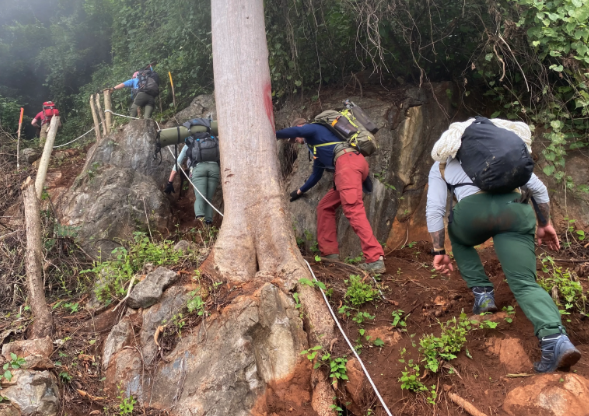Hello, folks! We’ve got a gripping story that takes us deep into the jungles of Laos, where a team of dedicated individuals embarked on a mission that sounds like something out of a Hollywood movie—but this is as real as it gets.
Picture this: a rugged cliffside, a remote mountaintop that once housed a top-secret Air Force radio site, and a group of brave souls determined to recover the remains of American servicemen lost in one of the most harrowing battles of the Vietnam War.
The backdrop? Lima Site 85, a covert radar station perched atop Phou Pha Thi in Houaphan Province, Laos. This wasn’t just any site—it was critical to U.S. operations during the war, guiding bombers into North Vietnam and playing a key role in the secretive “Project Heavy Green.”
But in March 1968, the site was overrun by North Vietnamese commandos in a brutal assault that left 12 U.S. Air Force personnel and many Hmong and Thai soldiers dead. Eleven of those Americans were never recovered—until now.
Enter Katie Rubin, a civilian forensic anthropologist/archaeologist who found herself on the face of a sheer mountain, attached to a rope, when she spotted something that would change everything: human bones. Rubin was part of a Defense POW/MIA Accounting Agency (DPAA) team sent to evaluate the area around Lima Site 85, nearly six decades after the fateful battle. The mission? Determine if it was even possible to recover the remains of those left behind.
But here’s the kicker—finding those remains wasn’t supposed to happen yet. The team was there to scout out the ledges below the cliffs, check for unexploded ordnance, and see if they could safely send in a recovery team later. Yet, in the middle of this dangerous terrain, Rubin stumbled upon the remains, setting off a chain of events that would ultimately bring closure to a long-open wound.
The team, trained to the max with courses at places like the Marine Mountain Warfare Training Center in California and the Army Mountain Warfare School in Vermont, was ready for anything. They navigated the treacherous cliffside with precision, recovering the remains and transporting them back to DPAA labs in Hawaii for identification.
The outcome? A match was made: Sgt. David Price, one of the 11 missing Americans, was finally coming home. For Rubin and her team, it was a moment of triumph, the culmination of months of grueling preparation and an emotional journey that touched every member of the crew.

So, why does this matter? Because stories like this remind us of the incredible sacrifices made by those who served, and the unwavering commitment to bringing them home, no matter how many years have passed. For Sgt. Price, it was a return long overdue, and for the team, a mission accomplished with honor and respect.
This story is not just about history; it’s about the enduring bond between those who serve and those who never stop searching for them. And that, folks, is something worth celebrating.


